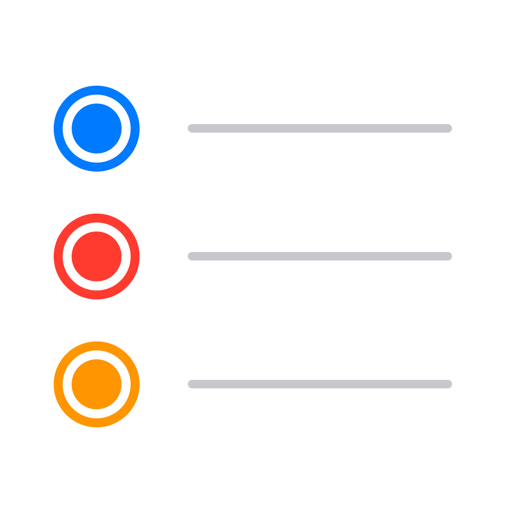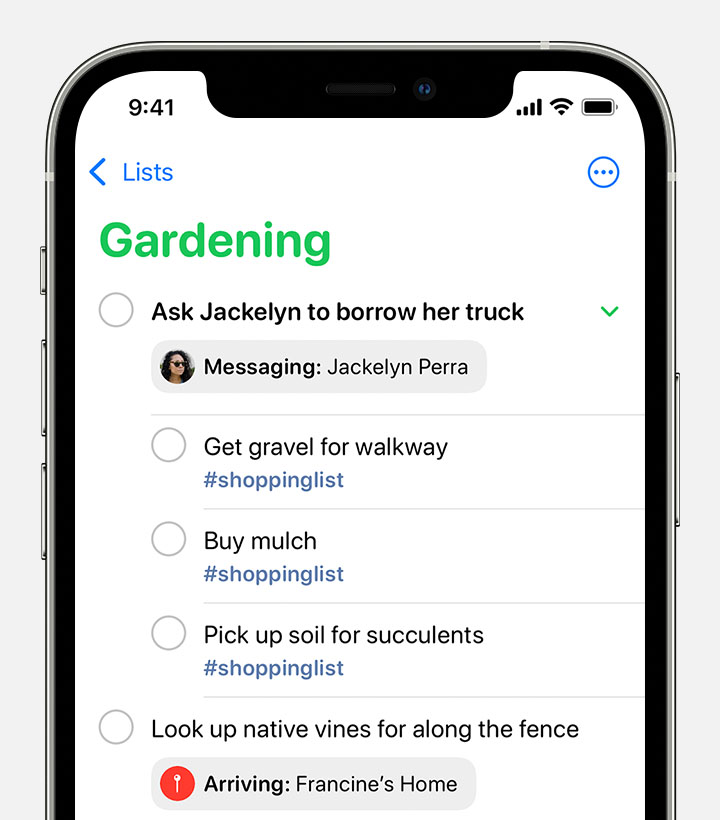Back to all comparisons
Google Tasks vs Apple Reminders
Comprehensive comparison to help you choose the right tool for your needs

Google Tasks
4.4
Google Tasks is a task management app, allowing users to create, manage, and prioritize tasks directly from their smartphone.This app is particularly useful for those already embedded in the Google ecosystem, providing a synchronized task management experience across devices.
Free
Visit Website 
Apple Reminders
4.7
Apple Reminders is a free task management app integrated into the Apple ecosystem, offering features like location-based reminders, list sharing, and Siri integration for iOS and macOS users. It's known for its simplicity and ease of use.
Free
Visit Website Quick Summary
Google Tasks Strengths
- Simple Task Management: Easily create, edit, and manage tasks.
- Google Workspace Integration: Seamlessly works with Gmail and Google Calendar.
- Subtasks: Break tasks into smaller, manageable steps.
- Due Dates and Reminders: Set due dates and get notifications.
Apple Reminders Strengths
- Simple Interface: Apple Reminders offers a clean and intuitive interface, making it easy for users to create and manage tasks.
- Location-based Reminders: Users can set reminders that are triggered by their location, such as reminding to buy something when near a specific store.
- Integration with Siri: The app integrates seamlessly with Siri, allowing users to create reminders through voice commands.
- Shared Lists: It allows sharing of lists with other Apple users, facilitating collaborative task management.
Google Tasks Screenshot
Apple Reminders Screenshot

Feature Comparison
| Feature | Google Tasks | Apple Reminders |
|---|---|---|
| Platforms | Available on web, Android, and iOS. | Apple Reminders is available for macOS and iOS. It does not have native apps for Android, Web, or Windows. |
| Integrations | Integrates seamlessly with Google services like Gmail and Google Calendar | IFTTT, Shortcuts App, Any.do, BusyCal, Fantastical, and Agenda |
| Calendar | Not Inbuilt | No |
| Task Management | Simple task management with features like creating lists, setting due dates, and making subtasks.. | Labels, priority settings, due dates, location-based reminders |
| Natural Language Processing | No | No |
| Analytics | No | No |
| Time Blocking | No | No |
| Time Zones | Not specifically mentioned | Yes, Apple Reminders supports different Time Zones. |
| Scheduler | No | No |
| Notifications | Yes | Yes |
| Pricing | Free | Free |
| Customer Support | Average | Average |
Video Overview
Google Tasks Video
Apple Reminders Video
Google Tasks Overview
Google Tasks, a part of the extensive Google ecosystem, is a straightforward and efficient task management tool known for its simplicity and integration with other Google services. This app is particularly effective for those who are already using Google Workspace, as it seamlessly integrates with Gmail, Google Calendar, and other Google apps. The minimalist design of Google Tasks allows users to quickly add, organize, and track tasks without the complexity of more feature-heavy tools. Its ease of use and accessibility across devices make it a practical choice for individuals looking to manage their to-dos within the familiar Google environment.
Pricing Details
Google Tasks is free to use.
Apple Reminders Overview
Apple Reminders is a to-do and task management app built into iOS devices, known for its simplicity and ease of use. It allows users to create task lists, set reminders, and share lists with other iOS users. Key features include location-based reminders and widgets for home screen organization. While it's a straightforward and clean app, it's primarily suited for personal use and may lack advanced features required for more complex task management.
Pricing Details
Apple Reminders is a free application provided as part of Apple's suite of apps on iOS and macOS devices. It does not have separate pricing plans. Users can access and use Apple Reminders without any additional cost.
Google Tasks Key Features
Simple Task Management: Easily create, edit, and manage tasks.
Google Workspace Integration: Seamlessly works with Gmail and Google Calendar.
Subtasks: Break tasks into smaller, manageable steps.
Due Dates and Reminders: Set due dates and get notifications.
Customizable Views: Organize tasks by date or priority in different views.
Drag-and-Drop Functionality: Reorder tasks as needed with a simple drag-and-drop.
Apple Reminders Key Features
Simple Interface: Apple Reminders offers a clean and intuitive interface, making it easy for users to create and manage tasks.
Location-based Reminders: Users can set reminders that are triggered by their location, such as reminding to buy something when near a specific store.
Integration with Siri: The app integrates seamlessly with Siri, allowing users to create reminders through voice commands.
Shared Lists: It allows sharing of lists with other Apple users, facilitating collaborative task management.
Customizable Lists: Users can customize lists with different colors and icons for easy identification and organization.
Attachments and Links: The app supports adding attachments like photos and links to reminders, enhancing the detail and utility of tasks.
Conclusion: Which Tool Should You Choose?
Both Google Tasks and Apple Reminders offer unique features and benefits for productivity and workflow management. The best choice depends on your specific needs, team size, and workflow preferences.
Choose Google Tasks if:
- Simple Task Management: Easily create, edit, and manage tasks.
- Google Workspace Integration: Seamlessly works with Gmail and Google Calendar.
- Subtasks: Break tasks into smaller, manageable steps.
Choose Apple Reminders if:
- Simple Interface: Apple Reminders offers a clean and intuitive interface, making it easy for users to create and manage tasks.
- Location-based Reminders: Users can set reminders that are triggered by their location, such as reminding to buy something when near a specific store.
- Integration with Siri: The app integrates seamlessly with Siri, allowing users to create reminders through voice commands.